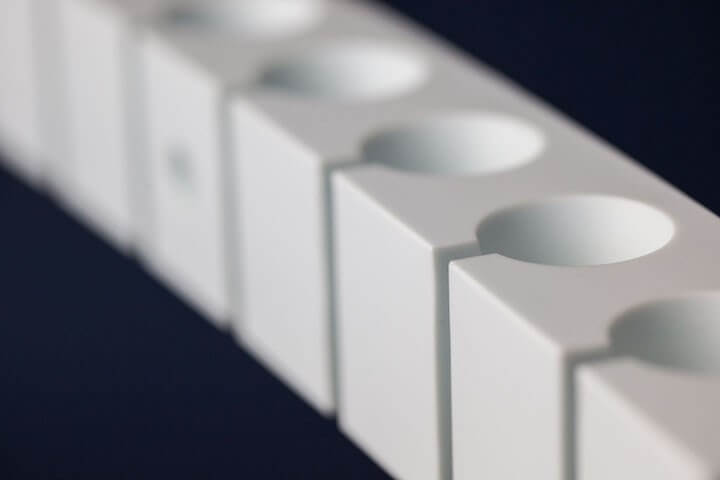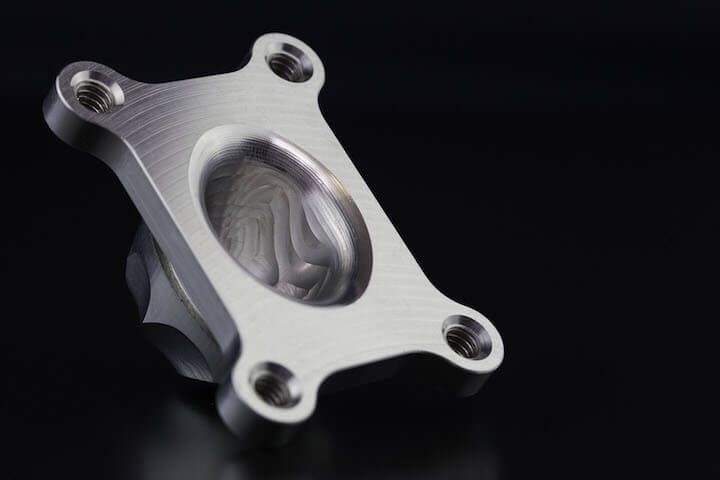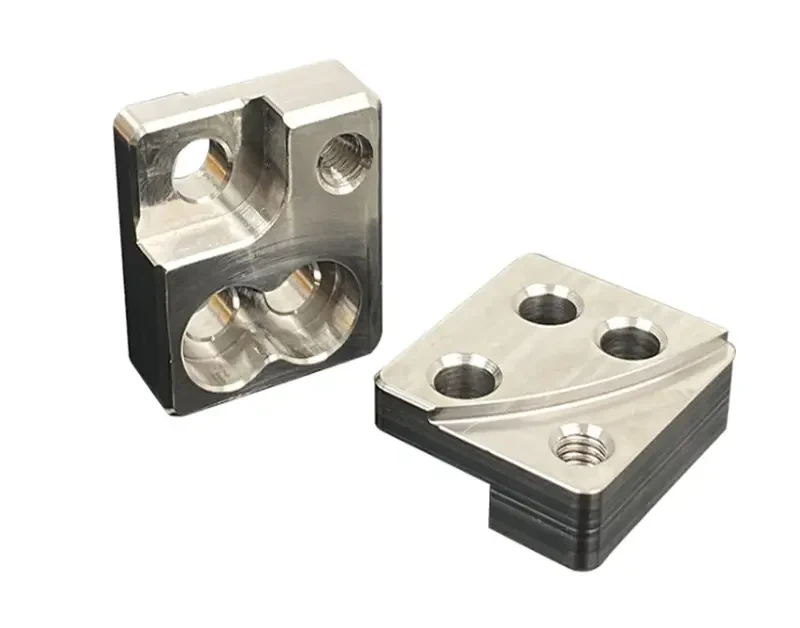A comprehensive guide to CNC machining
CNC machining is a subtractive manufacturing technique that uses computer-controlled machines to transform raw materials into finished products. It is a complex and efficient process and CNC machining products are widely used in industries such as aerospace, automotive and medical device manufacturing. This includes grinding. There are also different HS codes for machined parts.Hi Tech Machining & Engineering manufactures finished parts and assemblies for a variety of companies.
The process begins with the creation of a 2D drawing, 3D solid model, or both using computer-aided design (CAD) software. The design is then converted into a series of instructions (CNC program) and fed into the CNC machine using G-code. The machine then uses these instructions to direct and operate cutting tools, which cut material to form the desired shape and size.
CNC machining is a versatile process that can produce parts from a variety of materials such as metal, plastic, wood, or composites. CNC machines can perform a variety of manufacturing processes including: CNC drilling, CNC milling, CNC turning, CNC EDM cutting, CNC gear hobbing, and CNC grinding.
CNC machines are able to produce parts quickly and reliably with a high degree of accuracy and precision, and can create complex shapes that are difficult or impossible to accomplish manually. CNC machining has already changed the manufacturing landscape, and its importance couldn’t be more evident in 2023. This article will discuss the CNC machining process from raw material to finished product.

1.How does CNC machining work?
In CNC machining, a computer program controls the movement of a cutting machine, automating the production process with minimal human intervention. Here’s how it works:
Before you begin CNC machining, you need to design your part using computer-aided design (CAD) software to create a 3D model, 2D drawing, or both of the part. This model is later converted into a program that the CNC machine can read.
The most critical stage in CNC machining is choosing the right raw material for your project. The material can be a block of plastic, metal, or wood. The raw material should be strong enough to withstand the machining process.
Before you load the stock material into a CNC machine, you must develop the program for making the part—luckily, modern CAM software can develop the code for you. Modern CNC machines are programmed by loading a solid 3D model into the CAM software, which contains guidelines for the machine development, the tools to be used, and how much material to remove. CAM software outputs a G-code that the machine can read, which provides a range of tool speeds, tool selections, coolant flow rates, tool positions, and the timing of each operation, depending on the CNC machine. The machine then follows the program’s instructions to gradually remove the raw material from the workpiece.
Prior to machining, the raw material is secured into the CNC machine by various methods using clamps or fixtures. The material is then machined—the CNC machine moves to contact the workpiece or vice versa, depending on the type of machine.
While quality should always be a priority when designing, quality control measures are taken throughout the machining system to ensure that the final product meets the required specifications. Precision instruments such as micrometers and gauges are used to ensure quality, and if the product does not meet the required specifications, the program is changed and the machining process is repeated.
Once the machining process is complete, the final step is finishing. In this step, the machined part is inspected, cleaned, and polished—and other finishing operations such as plating, powder coating, chemical conversion coating, or tumbling may also be required. The finished product is ready for use or assembly with other parts.
2.CNC Machine Components
CNC machines are complex assemblies made up of multiple components that work together to create precision parts. The spindle is the heart of the machine and turns the cutting tool. The machine stand holds the cutting device in place, while the control board allows the operator to input commands and monitor the machine’s activities. To learn more about the 13 key components of a CNC machine, check out CNC Machine Components Explained.
3.Types of CNC Machines
There are many different types of CNC machines, each designed for a specific purpose. CNC milling machines use a rotating cutting tool to remove material from a workpiece, while CNC lathes use a turning device to shape materials. CNC routers are used to cut and shape wood, plastics, and other materials, while plasma cutters use a high-temperature plasma torch to cut metal.
CNC machines have a variety of cutting tools. End mills are used for machining activities, and drills are used to create holes. Taps are used to create internal threads, while reamers are used to create smooth and precise holes.
4.Material Selection
When choosing a material for CNC machining, many variables must be considered, including the desired properties of the finished part, the level of precision required, and cost. Metals such as aluminum, steel, and titanium are commonly used in CNC machining, as are some plastics and composites. When selecting raw materials for your application, consider material properties such as strength, hardness, and wear resistance.

5.Advances in CNC Machining
In recent years, advances in CNC machining technology have transformed the manufacturing industry, increasing precision, speed, and efficiency. These advances in CNC machining include:
1) Multi-axis machining
Multi-axis machines can move cutting tools along multiple axes, allowing for more complex geometries. For example, a five-axis machine can move the tool along three linear axes and two rotary axes, enabling the machining of complex shapes and parts with fewer setups.
2) High-speed machining
High-speed machining (HSM) uses advanced cutting tools and techniques to remove material quickly and efficiently. HSM machines can operate at higher speeds than traditional CNC machines, with shorter machining times and better surface finishes.
3) Additive manufacturing
Additive manufacturing, also known as 3D printing, is known for making complex parts with complex geometries. CNC machines can be equipped with additive manufacturing capabilities to produce parts layer by layer from materials such as plastics, metals, and ceramics.
4) Automation and Robotics
CNC machines can be equipped with automation and robotics features to further improve efficiency and effectiveness. Robots can load and unload workpieces, while automatic tool changers can quickly switch cutting devices, and machine vision systems can automatically inspect parts and identify defects.
5) Digital Twin Technology
Digital Twin technology allows you to create a virtual replica of a physical CNC machine, which can be used to enhance the machine’s performance and detect potential problems before they occur. The technology uses sensors and analytics to collect information about the machine’s performance and produce a digital model that simulates the machine’s behavior.
6) Internet of Things (IoT) Integration
IoT integration connects CNC machines to the internet and enables real-time data collection and analysis. The technology monitors machine performance, predicts maintenance needs, and optimizes machine usage. In addition, it can track the progress of components through the manufacturing process, providing customers with better visibility and control.
6.CNC Machining Applications
CNC machining is an essential part of modern manufacturing, using advanced computer-controlled machines to create high-precision finished products. Its flexibility and efficiency in producing complex designs and shapes make it a dynamic tool for various industries such as aerospace, automotive, and medical device manufacturing.
CNC machining services continue to grow and remain an essential part of the manufacturing industry, providing a cost-effective and reliable method to produce high-quality finished products from raw materials. Because CNC machining offers significant advantages, it will continue to be an integral part of the product development and manufacturing process.
